At 21, Conor Bradley is one of Liverpool’s younger defenders, with the majority of his career still ahead of him.
His development in the club’s youth academy has instilled several characteristic tactical elements of Liverpool’s playing philosophy in his game, which we will examine in greater detail throughout this article.
Bradley took his first steps in professional football with Bolton Wanderers in League One before returning to Liverpool for the 2023/24 season.
He immediately made appearances in several league matches, even starting in some.
This season, Bradley had the opportunity to start for Liverpool in the Champions League against Real Madrid.
However, he currently remains a rotational option, primarily due to the exceptionally strong competition in Liverpool’s backline.
The undisputed starter, Trent Alexander-Arnold, typically occupies the right-back position.
Last season, Bradley was frequently given the opportunity to start matches, earning a total of 10 appearances in the starting lineup in the Premier League alone.
This season, however, Bradley has predominantly been used as a substitute and has only been included in the starting XI once in the Premier League.
This shift might be attributed to the arrival of the new manager and a slightly adjusted tactical philosophy at Liverpool.
This aspect will be explored in more detail at the end of the article.
Conor Bradley Statistical Overview
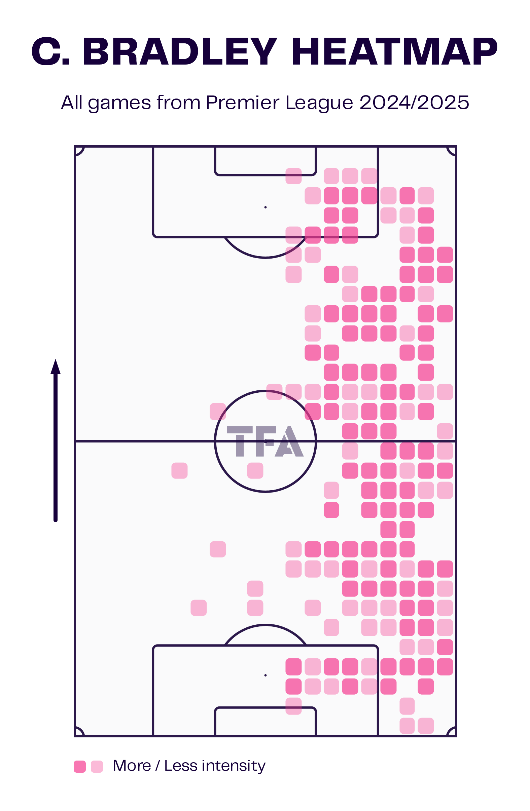
As the accompanying heatmap shows, Bradley is also highly active offensively down the right flank.
As a right-footed player, Bradley operates on the right side, where his far-side foot makes it more challenging for opponents to press effectively.
The heatmap clearly illustrates that Bradley predominantly operates from the half-space rather than the wide channel, even in attacking scenarios.
Later in the article, the reason why Bradley does not play along the touchline will be explained in greater detail.
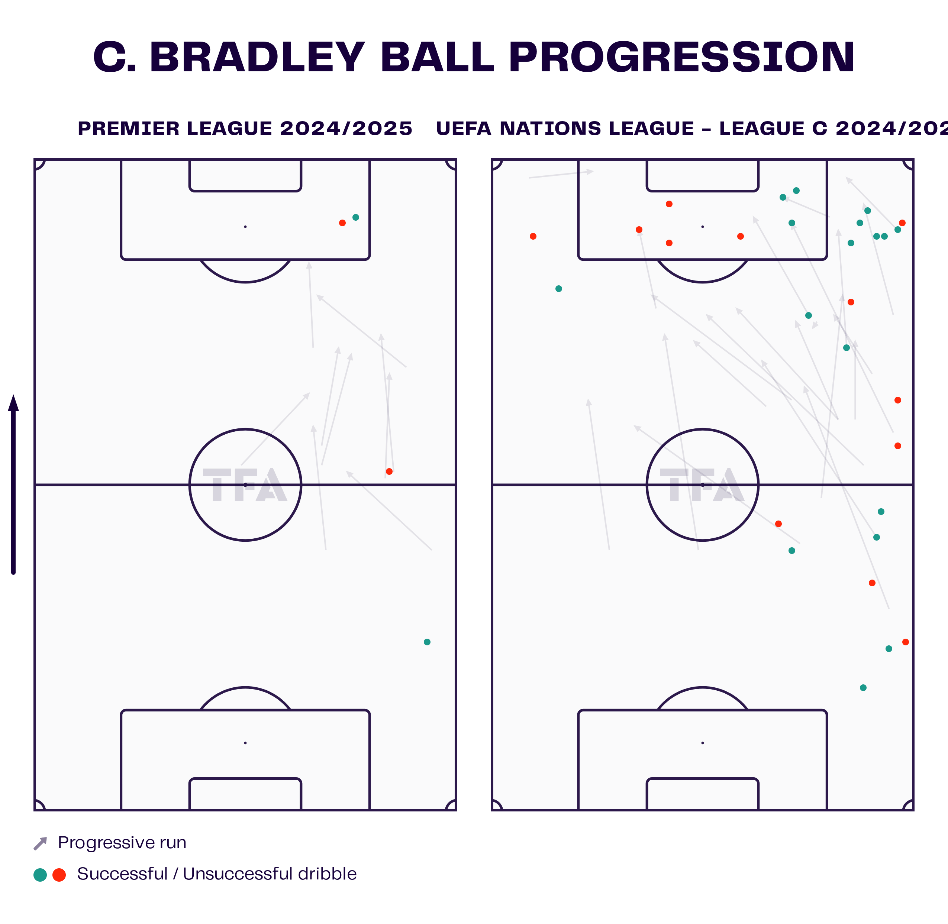
One of Bradley’s standout qualities, highlighted later in the article, is his ability to make progressive and supporting runs into deeper areas of the pitch.
What’s particularly intriguing is the contrast in the zones where Bradley primarily operates for the national team compared to his role in league matches for Liverpool.
As shown on the map, Bradley is generally less active in the final third for Liverpool and rarely ventures into wide areas.
In contrast, his positioning for the national team differs significantly.
The reasons behind these contrasting patterns of play will also be analysed in greater detail as the article progresses.
Conor Bradley In Build-Up Play
In build-up play, Bradley typically operates in a deeper position, just in front of the opponent’s pressing line, rather than pushing high up the pitch.
This is partly due to Liverpool’s setup on the flank.
Mohamed Salah benefits greatly from starting in a wider position before cutting inside, which is why Bradley, as a full-back, refrains from advancing high during the build-up phase.
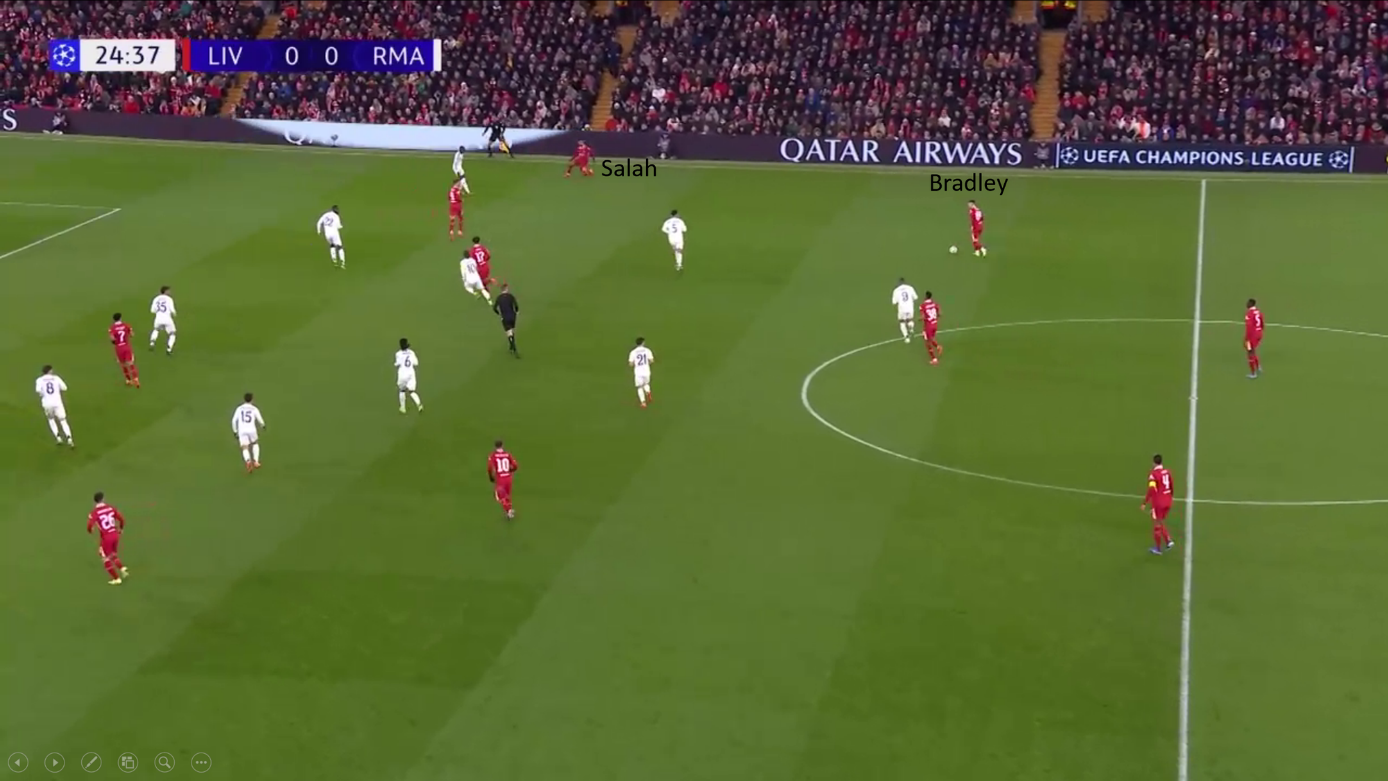
Additionally, this positioning plays to Bradley’s personal strengths.
His high dynamism consistently manages to break through opposing lines.
His ability to assert himself stems from his impressive top speed and effective use of his body.
Bradley rarely engages in tight one-on-one duels in offensive areas, as he often struggles with the quick changes of direction required in such situations.
Instead, he thrives on building up momentum and using his pace to almost overpower his opponents.
As a result, a position just in front of the opponent’s pressing line suits him far better.
Statistically, this strength is reflected in his so-called “progressive runs.”
These are runs in which a player carries the ball forward and gains significant ground for the team.
This season, Bradley averages 2.62 progressive runs per game, more than double the number recorded by Trent Alexander-Arnold, who plays the same position.
This is also a significant improvement over his performance last season.
These attributes combine excellently with Salah’s playing style.
Salah, whose primary aim is often to dribble into central areas from the wing, is frequently double-marked by opponents due to his strength in one-on-one situations.
Liverpool often takes advantage of this by having the full-back or holding midfielder make overlapping runs to create space for Salah in the centre and pull defenders out of position.
Bradley’s frequent involvement in such runs allows him to draw attention and contribute effectively to this tactical approach.
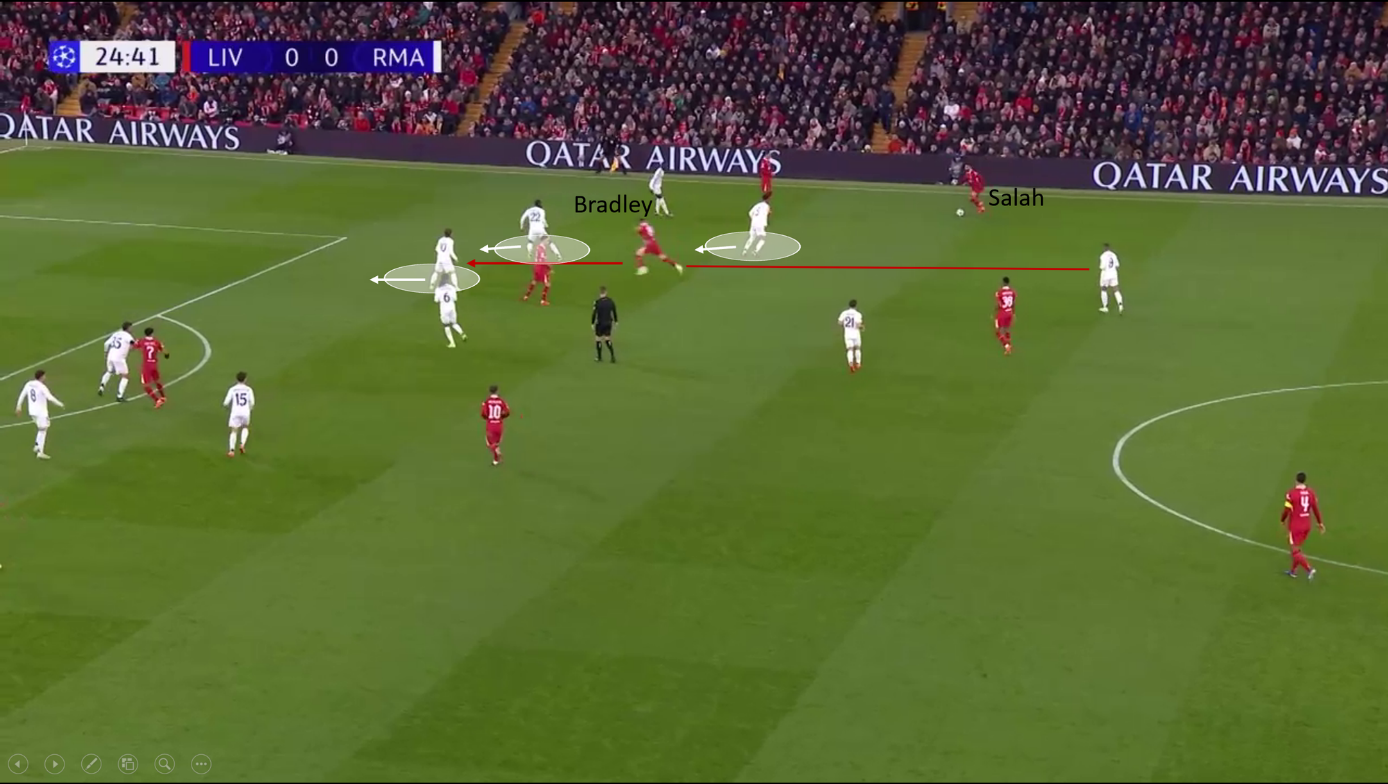
Conor Bradley Strength In Duels
Bradley also excels in defensive duels, particularly because of his intelligent use of his body and excellent timing.
Although he stands at 1.81m, he is not the tallest, but he consistently outpaces his opponents and gains positional advantage.
Bradley tends to act less aggressively and more patiently in open one-on-one situations, focusing on positioning his body between the ball and the opponent.
Unlike players such as Upamecano or Lucas Hernandez, who often take a more proactive approach in duels, Bradley rarely assumes the “active” role.
Instead, he waits for his opponent to make the first move before reacting.
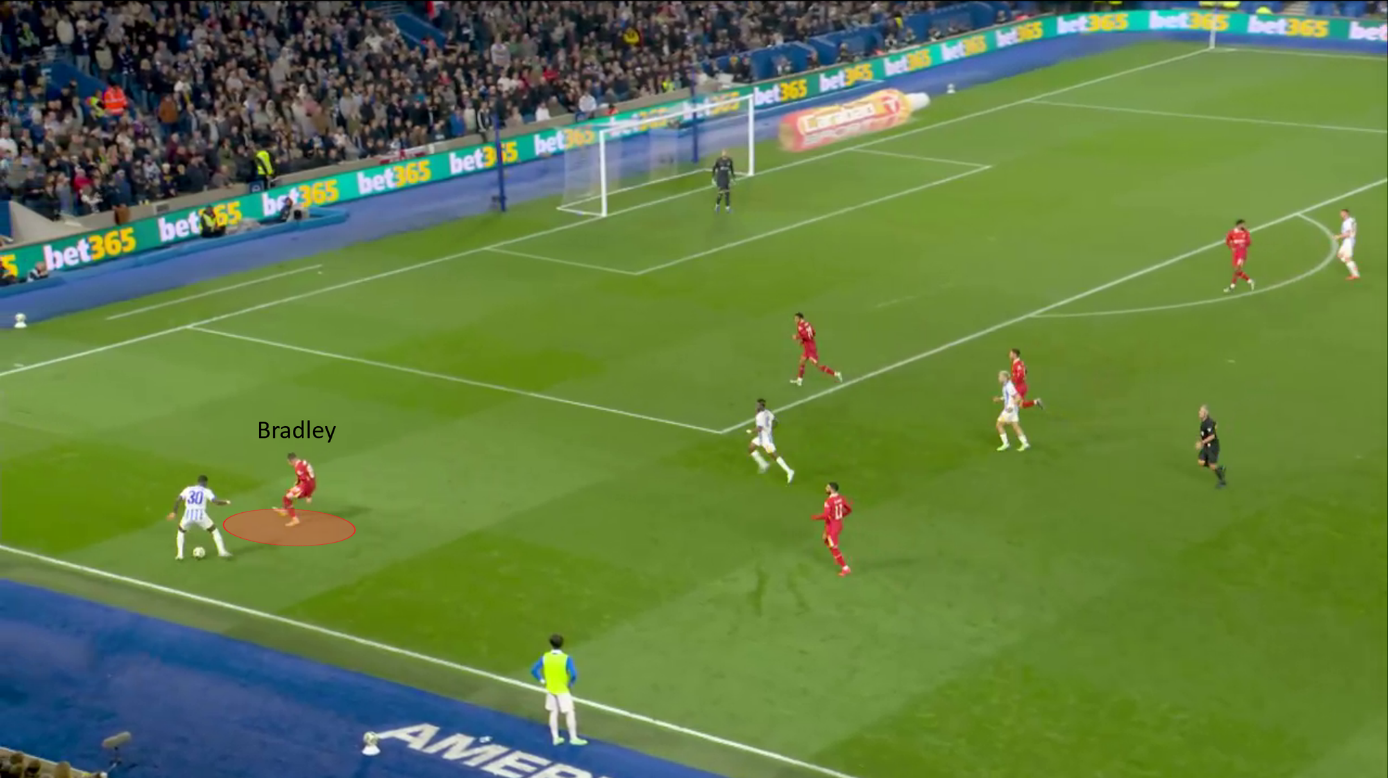
Statistically, Bradley boasts an impressive success rate of 64% in duels, which is a strong figure for a player in his position.
Bradley’s approach to one-on-one duels, which relies heavily on positional discipline, can be interpreted as both a strength and a potential weakness, depending on the situation.
On the one hand, Bradley demonstrates an impressive ability to neutralise even the best and fastest players by disrupting their momentum and dynamic play.
A notable example occurred during Liverpool’s Champions League match against Real Madrid when he repeatedly slowed down attacking moves involving the lightning-quick Mbappé.
On the other hand, Bradley often adopts a somewhat passive approach in isolated situations along the touchline when defending against his direct opponents.
In these scenarios, a more aggressive defensive style would occasionally be more effective.
By applying greater pressure on his opponent, Bradley could limit the time and space available for decision-making, forcing quicker and potentially less accurate actions from his adversaries.
Conor Bradley Counter-Pressing Ability
Bradley’s exceptional focus on counterpressing situations is one of his most striking features.
This makes him a perfect fit for Liverpool’s playing style, which is still heavily oriented toward counter-pressing.
Bradley consistently works against the ball immediately after losing possession, striving to regain it as quickly as possible.
This is particularly common for full-backs, who are often the first line of defence behind the wide players who are more prone to losing possession.
With 9.6 ball recoveries per game last season, 2.62 of which occurred in the opponent’s half, Bradley’s defensive contribution—especially in counter-pressing situations—proves statistically successful.
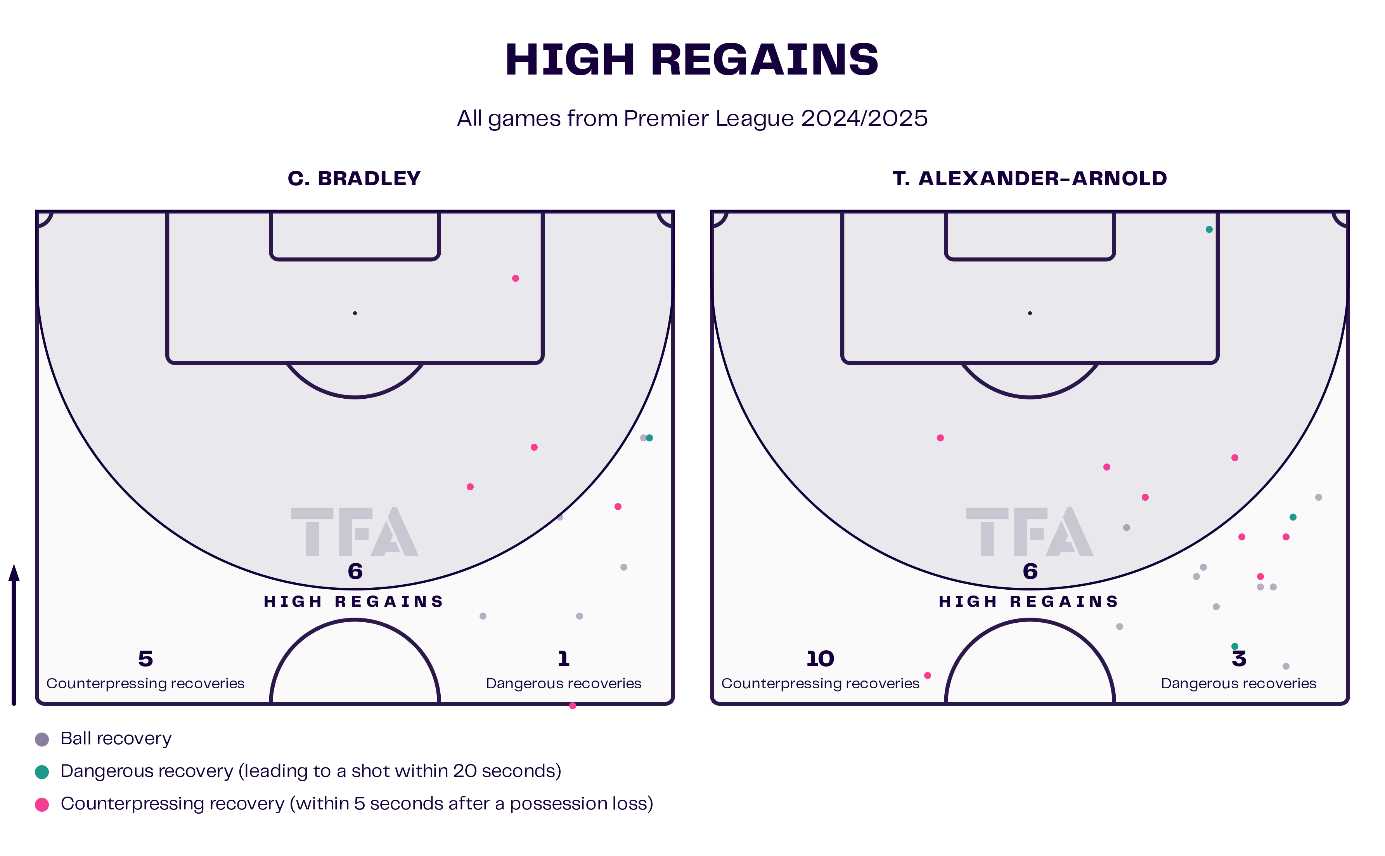
The graphic illustrating high ball recoveries further reinforces this impression.
Bradley frequently succeeds in regaining possession in advanced areas, often as a result of counter-pressing situations.
Although his absolute number of high recoveries falls significantly behind Trent Alexander-Arnold‘s, this can be attributed to the difference in total minutes played between the two players.
When the ratio of minutes played to balls recovered is examined, the comparison becomes quite impressive and reflects very positively on Bradley.
It’s worth noting that Trent is an undisputed starter for Liverpool, making Bradley’s numbers even more commendable in context.
Bradley’s ability to seek out these counter-pressing moments is largely linked to his football intelligence.
He frequently anticipates ball losses in advance and positions himself well to recover possession.
It’s likely that his development at Liverpool played a key role in this aspect of his game.
The playing philosophies of both the senior and youth teams are often aligned, making it logical that Bradley gained valuable experience in dealing with these situations during his youth development at the club.
Conor Bradley Leadership Qualities
Bradley impresses not only with his technical and footballing abilities but also with his outstanding leadership qualities.
At just 21 years of age, he was named captain of the Northern Ireland national team, a testament to his natural leadership and maturity both on and off the pitch.
On the field, Bradley is highly communicative.
He consistently engages with his teammates in a positive and supportive manner.
He frequently demonstrates an ability to uplift those around him, contributing to a cohesive team dynamic.
His playing style further reinforces these leadership attributes, exemplifying composure, reliability, and a commitment to collective success.
Bradley’s exceptional dynamism and strength in duels can inspire his teammates during critical moments of a match.
This influence is particularly evident in tightly contested games, where Bradley’s presence and commanding demeanour can make a decisive impact.
Another noteworthy aspect of his game is his ability to retain possession, as his low rate of turnovers aligns perfectly with the qualities expected of an ideal captain’s playing style.
Furthermore, a key trait of any leader on the pitch is a certain level of game intelligence—the ability to recognise pivotal phases of a match and adapt one’s approach accordingly.
Bradley’s impressive anticipation in counter-pressing situations exemplifies tactical acumen.
This skill has been highlighted previously and further underscores his value as a player and a leader.
Conor Bradley Future Potential
Although Bradley consistently relieves Salah through his progressive runs, he still too rarely poses a direct threat on goal in terms of shots or assists.
He needs to work on his decision-making in situations closer to the goal.
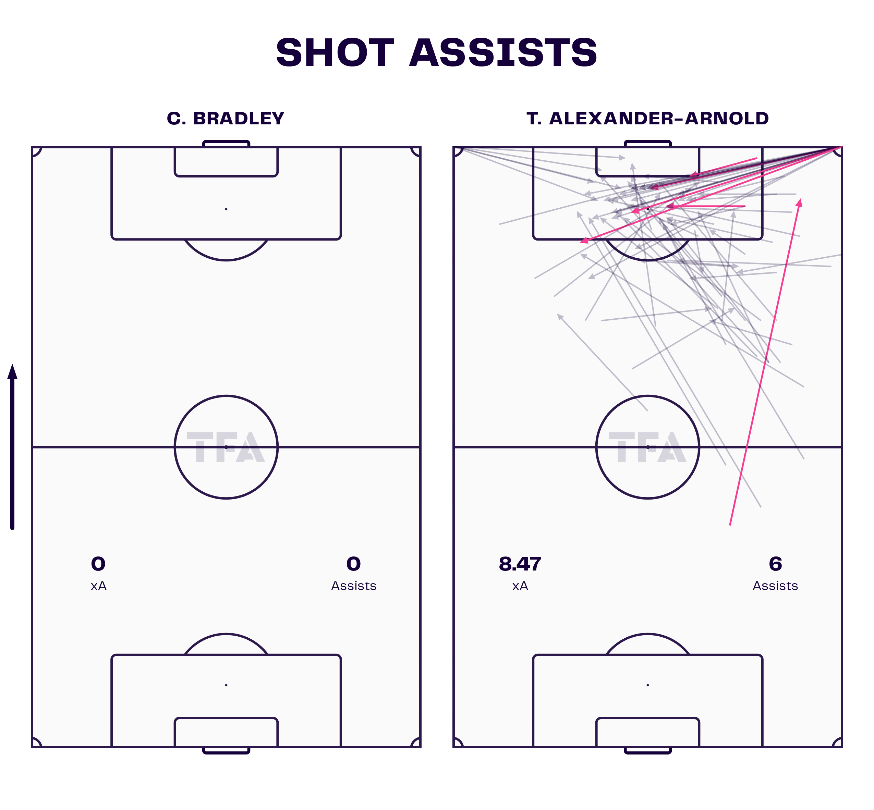
This is clearly reflected in the overview provided here.
While Trent Alexander-Arnold has consistently managed to create offensively dangerous chances within Liverpool’s system, Bradley has yet to register a single assist or goal-scoring opportunity in either of the two Premier League seasons he has played.
However, it’s important to acknowledge that Alexander-Arnold has played significantly more matches than Bradley, which naturally results in him having a considerable advantage in the total number of chances created.
This discrepancy in match appearances is a key factor when comparing their contributions in this specific area.
Furthermore, Bradley could look to engage in more direct one-on-one duels in offensive situations.
As a full-back, it’s crucial to be able to occupy your opponent and create numerical superiority by winning one-on-one battles.
Dribbling in these situations is less risky for full-backs, as they typically occur near the touchline. Moreover, these dribbles help improve pressing resistance against high opposition pressure.
Bradley’s acceleration and agility difficulties disadvantage him in such situations.
However, his high football intelligence could help him read his opponent better, reducing his reliance on his own pace in these duels.
For example, he could skillfully compensate for this weakness using his first touch.
Conclusion
Connor Bradley is still a very young full-back who has already gained experience at the highest level.
His strength in counter-pressing and numerous dynamic runs in behind make him an excellent full-back in Liverpool’s system.
With these attributes, he fits perfectly into Liverpool’s playing style.
Additionally, his strong leadership qualities work in his favour.
These qualities are already highly developed for his young age.
Therefore, his appointment as the Northern Ireland national team captain is entirely justified.
It will be interesting to see whether Bradley can continue to play as prominent a role under Arne Slot as he did under Jürgen Klopp.
After all, Liverpool’s style under Klopp was even more focused on verticality and counter-pressing moments, which suited a player like Bradley very well.
His development over the next year and in the coming years will undoubtedly be fascinating to follow.

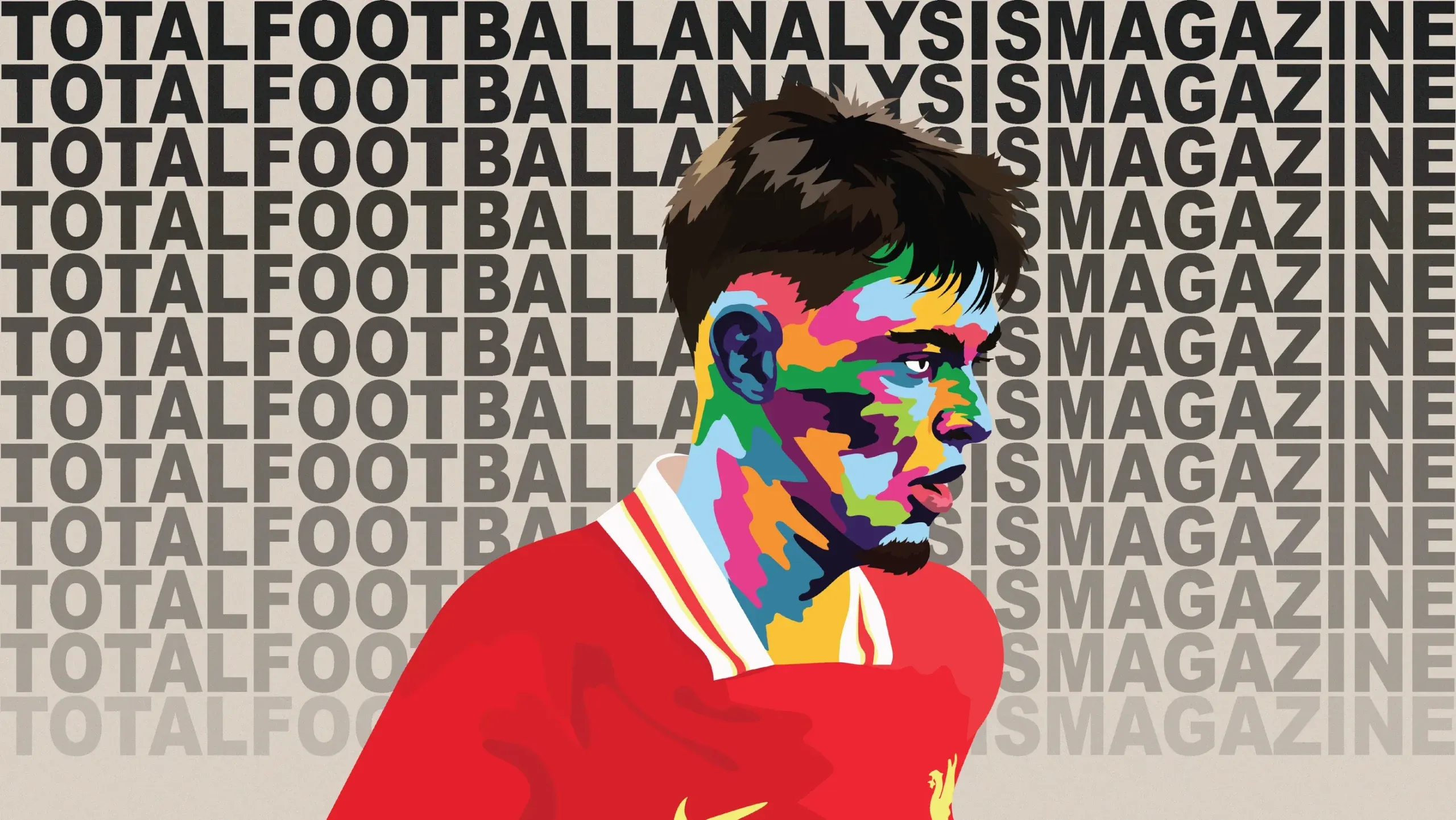




Comments